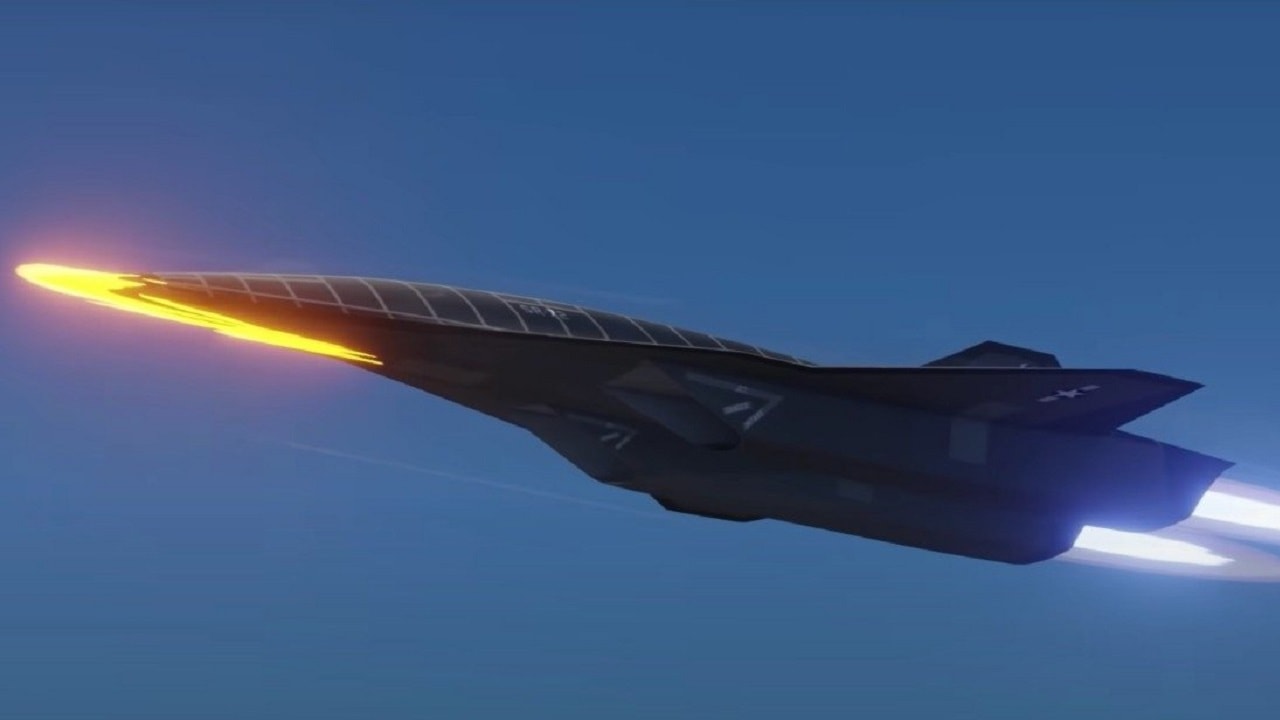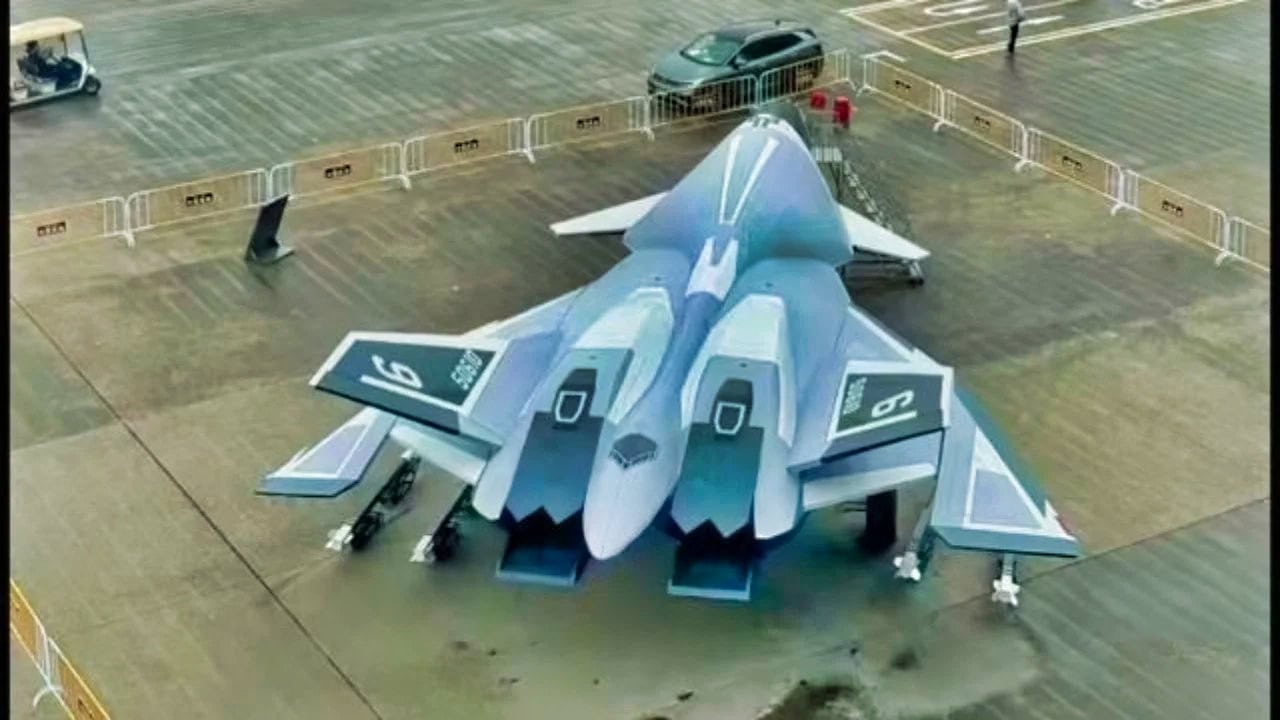At an airshow, a Chinese mockup fooled many online talking heads. But while the odd-looking aircraft was never meant actually to fly, its purported hypersonic flight characteristics are quickly becoming a reality.
China’s White Emperor was met with great fanfare when its Chinese designers pulled the curtain at the Zhuhai Airshow. The airframe is touted as a hypersonic manned platform. The mockup duped a number of people—but it isn’t a real aircraft. Even though it was in no way grounded in reality, speculation about its flight characteristics ran wild.
Though purely a mockup, the White Emperor is not so dissimilar to existent aircraft, perhaps most notably the SR-71 Blackbird. This United States Cold War-era quick-response reconnaissance platform proved impervious to virtually everything the Soviets threw against it. That aircraft, a record-setting supersonic aircraft, flew fast and high enough that it could outrun virtually all Soviet interceptor jets and remained out of reach of Soviet air defense batteries for many years.
However, the White Emperor might be more akin to the SR-72, a concept aircraft and successor to the SR-71. The SR-72 made a dramatic entrance in the latest Top Gun movie and represents an aircraft that, while technologically feasible, would be a significant engineering challenge to build—essentially a hypersonic spy jet capable of traveling anywhere in the world at mind-numbingly fast speeds.
SR-72: the Son of Blackbird
Initially thought up by Lockheed Martin, an aerospace company, the SR-72 is also known as the Son of Blackbird, after the SR-71, as mentioned earlier.
As a concept, the Son of Blackbird design is ambitious: capable of Mach 6 speeds, or six times the speed of sound, the air-breathing jet aircraft would offer a rapidly repositionable alternative to spy satellites and their orbits.
The United States, the Soviet Union, China, and today’s Russia each have hundreds or thousands of satellites in the air. While some of these, like the United States GPS, Russia’s GLONASS, or Europe’s Galileo, are used to beam down location coordinates all over the planet, many other satellites are their respective country’s permanently open eyes in the skies.
Though spy satellites provide a persistent reconnaissance presence in space, they follow rigid and predictable flight paths that, while prepositional, need time to change their flight path and angle of observation, which takes time. Compounding this problem is that spy satellites are observable by other adjacent satellites, clueing in acute observers as to their observational objectives. Spy planes like the SR-71 and SR-72 concept aircraft, in contrast, can observe virtually any place on the globe in mere hours and rapidly gather intelligence.
The Mach 6-plus speeds that Lockheed Martin proposed for the SR-72 concept would be a possible, though tricky, aerospace challenge to overcome. Friction on the aircraft’s airframe caused by the atmosphere would generate intense heat and thermal energy that must be mitigated to prevent a catastrophic breakup while in flight.
Another challenge would be what kind of propulsion would be required to get a manned aircraft up to Mach 6 and beyond. An aircraft capable of hypersonic speeds would need to successfully navigate flight at subsonic, supersonic, and hypersonic speeds—an incredible demand that the vast majority of engines in existence would not be able to achieve.

SR-72 Artist Rendering. Image Credit: Creative Commons.
One option for an aircraft like the SR-72 would be a turbine-based combined cycle (TBCC) engine. This engine combines the qualities of conventional engines at lower take-off and landing speeds with a scramjet engine for enduring hypersonic flight.
Lockheed Martin has previously suggested that research into an SR-71-successor aircraft has been started but has also been tight-lipped about the aircraft’s developmental progress. However, other aircraft conceptually similar to the SR-72 are already in the works—not in the United States but in China.
China’s Hypersonic Reconnaissance Drones and White Emperor
The so-called White Emperor is in no way grounded in reality. However, what that aircraft would have achieved had it been a real platform — reconnaissance at hypersonic speed — is quickly becoming a reality thanks to advancements in that country’s unmanned assets.
Chinese drones like the MD-22 and other similar air-launched platforms have made rapid advancements in recent years, affording the Chinese a rapidly deployable eye in the sky with which to observe Taiwan, South Korea, and other areas in China’s near abroad.
Though little is definitively — or publicly — known about China’s growing class of unmanned reconnaissance platforms, they have the potential to tip the balance of power in the Indo-Pacific in China’s favor when combined with other strategically important assets in the region.
What Happens Now?
A single reconnaissance drone, or even an entire fleet of them, would not unalterably tip power dynamics in China’s favor. However, some of Beijing’s other assets, including fifth-generation aircraft and a rapidly growing fleet of surface vessels, are important factors to consider. The White Emperor is not a real aircraft, but some of its hypersonic capabilities are not next-generation capabilities but are today’s technology.
About the Author: Caleb Larson
Caleb Larson is an American multiformat journalist based in Berlin, Germany. His work covers the intersection of conflict and society, focusing on American foreign policy and European security. He has reported from Germany, Russia, and the United States. Most recently, he covered the war in Ukraine, reporting extensively on the war’s shifting battle lines from Donbas and writing on the war’s civilian and humanitarian toll. Previously, he worked as a Defense Reporter for POLITICO Europe. You can follow his latest work on X.

